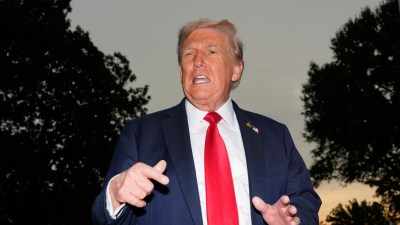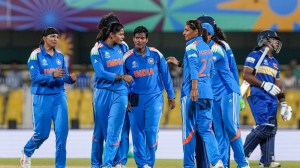My faith,My Art
With a tonsured head,bereft of garments,covered in mud and sweat,performance artist Inder Salim feverishly draws lines in the earth with barbed wire.
In the time of Islamophobia,how do artists react to their religious identity?
With a tonsured head,bereft of garments,covered in mud and sweat,performance artist Inder Salim feverishly draws lines in the earth with barbed wire. Beside him is a bamboo fence covered with the same wire and strung with several objects; from beer bottles to jam jars,soft-drink cans and a glutenous substance that looks a bit like blood. Salim rattles the fence causing an atonal music,he beats an old tin box,he blows into the bottles making an eerie breathless sound and,after an hour and a half,he lies down,subjecting his bare flesh to the abrasion of the barbed wire.
Salims performance,Earth Territory and Music,which took place in Delhi last month,was a part of a live-streamed global art conference,About the Art of Living and the Art of Survival. In this work,I have tried to deepen my understanding of Muslim or Islamic identity,to expand it to a more universal metaphor the angst felt by a Kashmiri Muslim is specific and different from that felt by a Muslim from Iran,Pakistan or Egypt. But the angst that one experiences when borders are policed,countries divided and people brutalised is the same, says the 46-year-old artist.
For Salim,Muslim identity is itself a performance,a chosen role. Twenty-five years ago,Salim,a Kashmiri Pandit,rejected his identity and took on the hyphenated name of Inder-Salim. When Gujarat was being torn apart by riots in 2002,he made posters featuring twin images of himself as a fez-wearing Muslim,and a Brahmin in saffron robes. Scribbled below,in alphabets that resembled kebabs was the title,Stuff from Kashmir. He stuck the posters on buses and walls in Ahmedabad and Baroda in a gesture typical of his confrontational art.
In the time of Islamophobia,what is it to be a Muslim artist? Are labels like Islamic art restrictive or can artists embrace that identity and channel it into their art?
Amina Ahmed is a 46-year-old artist based in New York and calls herself a Kutchi-Turk-Indian. Her work,she says,is infused by traditional Islamic art. The geometry of the Jali,the symmetry of Islamic architecture,poetry and nature are important to my work. Its never been something that I have thought of as fashionable,controversial or even political, says Ahmed. Her solo,to be held at Seven Art Limited gallery in Delhi in October,consists of work that is subtle and coded. They are poetically rendered mixed-media works that emulate falling leaves,flying birds,floating cotton seeds or wispy feathers. They possess the transcendental beauty that is driven by the Sufi belief that all faiths are one. We are all searching for our identity. In this time of Islamophobia,where everything around me,especially the media,is saying,Be afraid of Muslims,it makes me more determined to practice what I understand as Islam,to make beautiful art that reflects the inward aspects of Islam. I am a Muslima, she says.
Some artists,while embracing their religious identity,also question it. Pakistani artist Ayesha Durrani speaks of the claustrophobia of the purdah through her art,even addressing the larger issues of being a woman. An artist like Pakistan-born India-based Bani Abidi positions her arguments as a critique of state and bureaucracy. She finds labels like Islamic art oppressive. Why call it Islamic art? says Abidi. Islam is a religion and my art,whether I make it from Delhi or from Lahore,is not religious at all. It is secular and it has always looked at state and military control,which is why I find such labels redundant. My identity is not just Pakistani or Indian,I am an artist, says Abidi.
A few of the artists,like the Lahore-based Anwar Saeed,have had a difficult time showing in the subcontinent. Khalil Chishtee,who taught at the Lahore National College of Arts before he moved to New York,was denied a visa twice in the last two years when he had a solo in India. Using plastic bags to create art,Chishtee transforms them into human figures that are stretched and distorted to evoke the pathos of the human condition. My works evoke physical and emotional vulnerability that is usually universal, says Chistee. It is more personal than political. Representatives of the Indian galleries,which hosted his shows,argue that when artists like Chishtee are denied a visa,it has more to do with the last name of the person in question.
Pakistani artist Rashid Rana,who morphs popular images like news stills into complex and often naughty imagery,does believe that identity has its place but with a caveat. Art should not look like a slogan or a poster,its a more complex relationship where one is sensitive to violence and intolerance in society. Hence my works are more about the day-to-day experience of living, he says. Ranas series In Veil I,Veil II & III (2004) critiques the sexual objectification of women. His photo-collages depict a figure dressed in a burqa. Look closer,and it reveals itself as thousands of small,unfocused pornographic stills of women. My intention is to destroy both these images and force the viewer to look beyond them, says Rana.
For Brooklyn-based Pakistani artist,Seher Shah,34,covering her head became a political statement after 9/11. Her exhibition Jihad Pop and Paper to Monument,which was held in Delhis Nature Morte in 2009,all dealt with the standoff between Islamic countries and the West. The levels of hostility have escalated in a post-9/11 world. New York City changed for the Muslim community after the attacks and it was something that affected me both personally and politically, says Shah. She talks of Coney Island,home to a large group of South Asians,that she frequented with her family on various dinners and grocery outings, and how it was affected by illegal detentions and deportations. Her art too reflects such realities. Her works are peopled by uniformed men marching on the grounds,or piled up as human pyramids; and political leaders with imperialist visions.
In their own ways,all the artists seek to counter the negativity around Islam,and engage with questions of power and authority in new and meaningful ways. They also reveal that the idea and practice of Islam is not homogenous,but can be understood from different,even contradictory points of view.



- 01
- 02
- 03
- 04
- 05



























